+Search query
-Structure paper
| Title | Plastic degradation by insect hexamerins: Near-atomic resolution structures of the polyethylene-degrading proteins from the wax worm saliva. |
|---|---|
| Journal, issue, pages | Sci Adv, Vol. 9, Issue 38, Page eadi6813, Year 2023 |
| Publish date | Sep 22, 2023 |
 Authors Authors | Mercedes Spínola-Amilibia / Ramiro Illanes-Vicioso / Elena Ruiz-López / Pere Colomer-Vidal / Francisco Rodriguez-Ventura / Rosa Peces Pérez / Clemente F Arias / Tomas Torroba / Maria Solà / Ernesto Arias-Palomo / Federica Bertocchini /  |
| PubMed Abstract | Plastic waste management is a pressing ecological, social, and economic challenge. The saliva of the lepidopteran larvae is capable of oxidizing and depolymerizing polyethylene in hours at room ...Plastic waste management is a pressing ecological, social, and economic challenge. The saliva of the lepidopteran larvae is capable of oxidizing and depolymerizing polyethylene in hours at room temperature. Here, we analyze by cryo-electron microscopy (cryo-EM) 's saliva directly from the native source. The three-dimensional reconstructions reveal that the buccal secretion is mainly composed of four hexamerins belonging to the hemocyanin/phenoloxidase family, renamed Demetra, Cibeles, Ceres, and a previously unidentified factor termed Cora. Functional assays show that this factor, as its counterparts Demetra and Ceres, is also able to oxidize and degrade polyethylene. The cryo-EM data and the x-ray analysis from purified fractions show that they self-assemble primarily into three macromolecular complexes with striking structural differences that likely modulate their activity. Overall, these results establish the ground to further explore the hexamerins' functionalities, their role in vivo, and their eventual biotechnological application. |
 External links External links |  Sci Adv / Sci Adv /  PubMed:37729416 / PubMed:37729416 /  PubMed Central PubMed Central |
| Methods | EM (single particle) / X-ray diffraction |
| Resolution | 1.93 - 2.85 Å |
| Structure data | EMDB-16521, PDB-8ca9: EMDB-16524, PDB-8cad: EMDB-16531, PDB-8can: 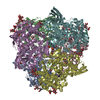 PDB-8po9: |
| Chemicals |  ChemComp-CU:  ChemComp-HOH: 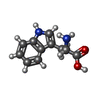 ChemComp-TRP:  ChemComp-NA:  ChemComp-MG:  ChemComp-CL: 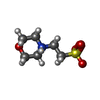 ChemComp-MES: 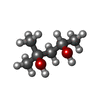 ChemComp-MPD:  ChemComp-GOL: 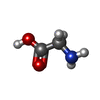 ChemComp-GLY:  ChemComp-SO4: |
| Source |
|
 Keywords Keywords | UNKNOWN FUNCTION / Galleria mellonella / Wax worm saliva / Plastic degradation / Polyethylene degradation / PEases / Hexamerin / Hemocyanin/phenoloxidase superfamily / Metal binding / Arylphorin / OXIDOREDUCTASE / Polyethylene oxidation enzyme / PEase / XP_026756460 / Cibeles |
 Movie
Movie Controller
Controller Structure viewers
Structure viewers About Yorodumi Papers
About Yorodumi Papers




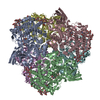




 galleria mellonella (greater wax moth)
galleria mellonella (greater wax moth)